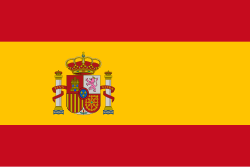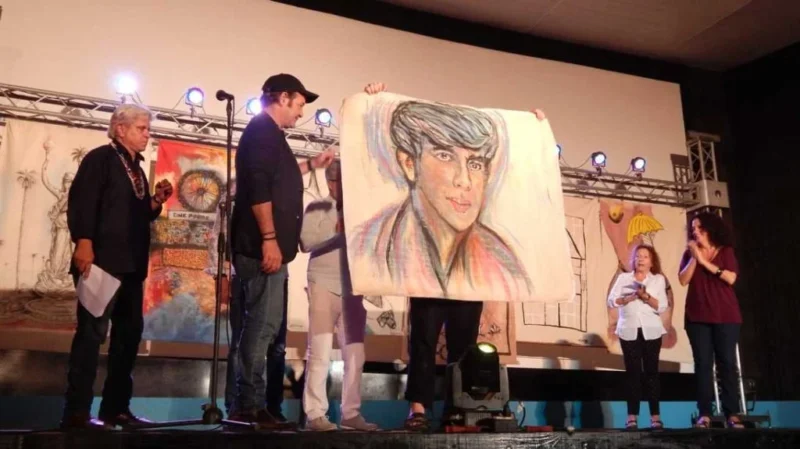Gibara has always been a beautiful town, as most of the cities by the sea, so are the cases of Baracoa, Havana, Santiago de Cuba and Puerto Padre, where the salt air expels the stress from your body, tired of so much city concrete.
I remember when filmmaker Humberto Solás came with his crew to shoot “Miel para Oshun” (Honey for Oshun), and how the charm of the also nicknamed Villa Blanca de los Cangrejos (White Village of the Crabs) infected him and he then thought of creating a festival that he would later name International Low Budget Film Festival of Gibara.
It was a dream come true and had the support of the Cuban Film Institute (ICAIC for its Spanish acronym), the Municipal Government of Gibara and the political and government institutions in the province of Holguin.
Being low budget did not mean poor production, whose main idea was rewarding filmmakers who had few economic resources for the filming and all the expenses linked to the Seventh Art, whose industry wastes away millions of dollars from Hollywood in the U.S. to Bollywood in India
I also remember that dinner with Humberto Solás, and actors Isabel Santos and Jorge Perugorría at the famous El Polinesio restaurant in the city of Holguín. I took the opportunity to interview them.
They agreed to leave the dinner to talk with them, along with then TeleCristal journalist Caridad Franco.
Neither Santos nor Perugorría considered they are movie stars, when in fact they are, due to their great professionalism and multiple awards in Cuba and in major film festivals in the U.S., Argentina, Spain, Italy and Russia, just to name a few.
Far from the glamour of the Oscars or Cannes Film Festival, Gibara Film Festival is professional, with great glamour, the physical beauty of the actors and actresses is not exploited, nor the way they are dressed, following influencing international fashion.
The glamour of Gibara is in the beauty of art, but of authentic art without banalities. The glamour of the Villa Blanca does not lie in the commercial display of the big sponsoring brands as in New York, Miami, Rome, Berlin, Tokyo or Madrid, host cities of big film festivals, which have also have also made history.
I do not take away the merit that corresponds to them, because there Cuban filmmakers have also won awards or have competed, because Cuban filmmakers have also won awards or have competed there, proving Cuban seventh art is also universal for the themes it has dealt with, throughout its history, since the triumph of the Cuban Revolution.Since that dinner with Solás, Santos and Perugorría, 18 editions of this festival have passed, which omitted its original name to become Gibara International Film Festival, reaching its eighteenth edition this August.
Unfortunately Solás died but not his Festival, which will be held from August 6 to 10, this 2024, and will be especially focused on the goal of encouraging audiovisual creation worldwide, from the province of Holguin.
It is this why that this year a meeting will be held for the first time, which has been called Factoría del Cine Pobre (Low Budget Film Factory), which seeks to promote the development of low-budget film projects that have been conceived in the five eastern Cuban provinces and Camagüey.
Inspired by this motivation, also the poster and the graphic campaign that will accompany this edition are a foretaste of the Factory, which in turn responds to the founding desire of the Gibara Festival, inspired by the Manifesto of the Low Budget Fima Festival, to join in an event the communitarian with the cinematographic thing, the consumption of cinema with its production, and the need to encourage a local economic development, which far from uprooting or blurring the local context, protects, strengthens and launches it towards a future of prosperity and sustainability.
In this year’s poster and graphic campaign, the use of blue and white, tones that allude to the seaside, as well as the presence of birds such as those that fly and fish in the bay of Gibara, and other elements such as the cursive and hurried handwriting used to scribble notes on the clapperboards.
Everything comes together in Gibara for this international celluloid festival. From the great screenings of the best Cuban and world cinema at Jiba cinema to the concerts of the Argentinean Fito Paez and the Cuban Cuban trova singers Silvio Rodríguez and Carlos Varela.
The great filmmakers and actors of international renown mingle with the people without the need for bodyguards. Along the streets of Gibara have walked from Puerto Rican Benicio del Toro to Spanish Imanol Arias. From Perugorría to Victoria Abril. From Eslinda Nuñez to Isabel Santos, among other great professionals.
Filmmakers, actors, actresses, photographers, cameramen, sound technicians, journalists, singers, film students, all of them sharing together
with the people, and under the burning sun, the pure air with the smell of the Atlantic waters, watching the mountains of an intense and beautiful green of this region of Holguín, where a festival with high professional glamour takes place.
With information from Aniel Santiesteban García
- Friendship is a soul that inhabits two bodies - 8 de December de 2025
- To capture the most beautiful even when we talk about pain - 30 de November de 2025
- When Life Only Asks You to Be Happy - 25 de November de 2025

